Infrastructure Victoria have published Victoria’s Infrastructure Strategy 2021-2051, containing multiple recommendations that support Streets Alive Yarra’s policy proposals, including for:
- improved footpaths and safe crossings,
- a network of protected bicycle lanes that link 30 km/h superblocks,
- reallocating street space from driving and parking, to walking, cycling, trees and place making,
- protected, level-access tram stops,
- replacing parking minimums with parking maximums, and
- reforms to the pricing of on-street parking.
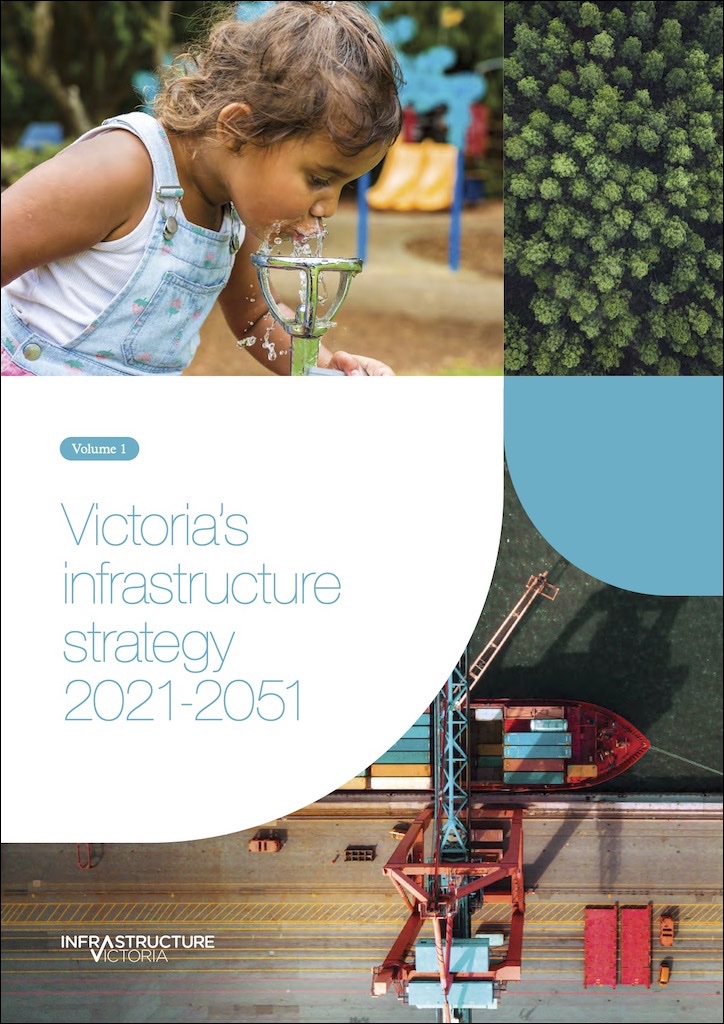
Recommendation 21
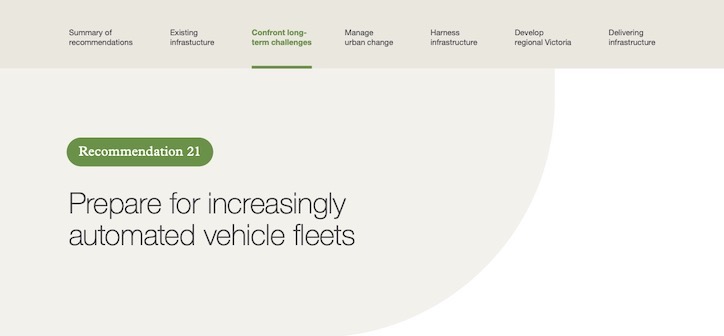
The Victorian Government should also allow flexible planning to support property owners and local authorities to adapt to automated vehicles. Immediate priorities include flexibility in statutory planning for car parking infrastructure and design standards to allow for retrofits. They also include introducing flexible kerb space in high density areas, so spaces better meet changing demand and usage patterns, as well as local transport and land use goals.
Recommendation 21, page 79 (our emphasis)
Note the need for flexibility in statutory planning for car parking infrastructure. If the vehicle fleet transitions to autonomous vehicles, then there will be less need for parking. Our planning scheme shouldn’t force building owners to install off-street parking that they won’t need. Council should propose an amendment to Yarra’s Planning Scheme that removes parking minimums for any property in Yarra, and replaces them with a parking maximum of one parking bay for every 100 m2 of floorspace, as per the C281 amendment for Cremorne. For more information: https://streets-alive-yarra.org/parking-maximums/.
Recommendation 31
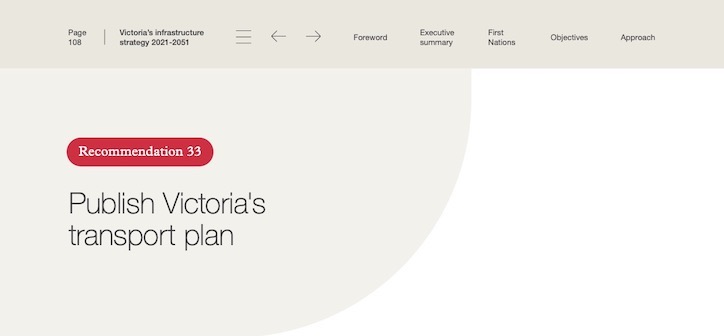
Without a transparent transport plan, the proposals for addressing transport challenges and forward planning intentions are not clear.
Recommendation 31, page 108
Both the state government and the City of Yarra should publish a transport plan, ideally one that is integrated with a land use plan. For more information: https://streets-alive-yarra.org/integrated-transport-plan/.
Recommendation 37
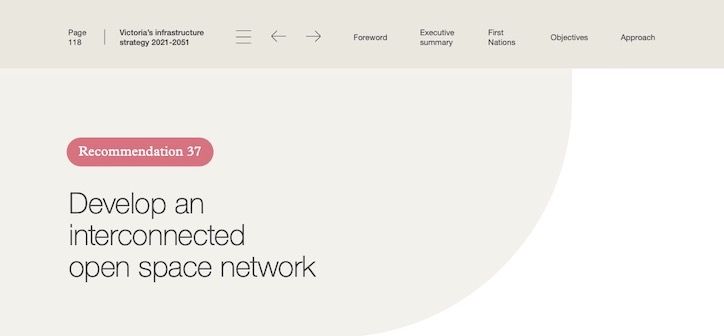
Building on its release of a high-level Open Space Strategy in early 2021, the Victorian Government should work with local councils in Melbourne and larger regional cities to fund connectivity improvements and tree planting in open space planning and delivery, such as using tree-planting programs. Local government urban forest strategies can also include tree canopy targets, reflecting those in Living Melbourne and Land Use Framework Plans.
Recommendation 37, page 118
Council should reallocate space away from driving and parking, toward trees, footpaths and ‘linear open space’. For more information: https://streets-alive-yarra.org/open-space/.
Recommendation 38
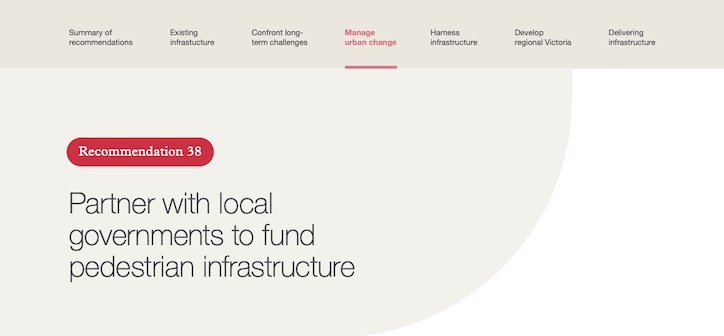
Walkable cities and suburbs deliver many benefits. Walking supports overall health and wellbeing, and social inclusion. A daily, 20-minute long and brisk walk can reduce the chance of early death from 16% to 30%, increase life expectancy by up to three years and help prevent chronic disease. One study estimates every kilometre walked daily delivers $1.68 in health benefits for the walker. Footpaths provide access to open spaces and other local amenities, take up less land, and cost less than roads and public transport. More people walking more often also helps reduce road congestion and public transport crowding, improves air quality and reduces greenhouse gas emissions.
Recommendation 38, page 119
Council should increase its allocation of space and budget to wider footpaths and safe crossings. For more information: https://streets-alive-yarra.org/footpath-network/.
Recommendation 39
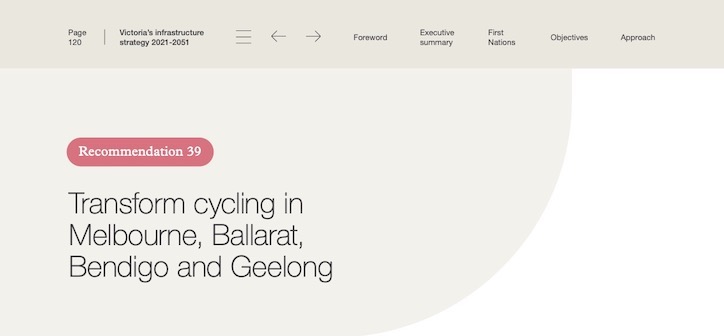
More than half of Melbourne’s vehicle trips are less than 6 kilometres. Converting even a small proportion of these trips to cycling can help reduce localised congestion, improve air quality and health, and cut carbon emissions. Cycling is one of the cheapest, cleanest and most space efficient modes of transport. Cycling for 30 minutes a day, five days a week, can reduce the physical inactivity disease burden by 26%, and countries with higher cycling rates have lower obesity rates than Australia.
Recommendation 39, page 120
Beyond conventional bicycles, well-designed separated cycle ways can be used by e-bikes and other personal mobility devices, expanding the diversity of people who can use them, and extending the distance people can travel.
Recommendation 39, page 120
Council should increase its allocation of space and budget to protected bicycle lanes that link 30 km/h Low Traffic Neighbourhoods (or superblocks). For more information: https://streets-alive-yarra.org/bicycle-network/.
Recommendation 41
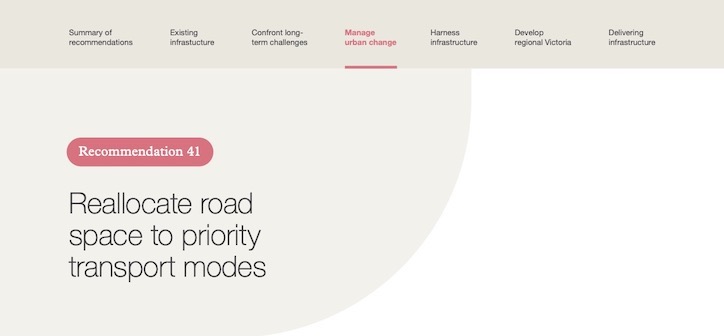
…infrastructure changes such as gradually installing tramway barriers, protecting cycleways, widening footpaths, or replacing parking with better bus and tram stops or ‘pocket parks’. They also include targeted enforcement to help improve road user compliance and realise road space allocation benefits. We have previously identified streets in the cities of Stonnington and Yarra as potential priority places.
Recommendation 41, page 123 (our emphasis)
Council should increase its allocation of street space and budget to walking, cycling, trees, and place making. For more information: https://streets-alive-yarra.org/budget/.
Recommendation 44
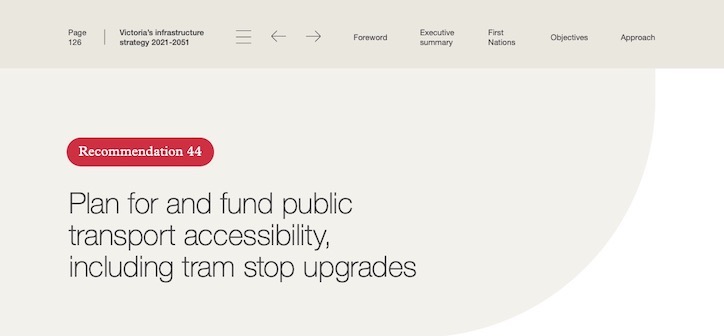
Infrastructure needs to cater for the diverse needs of Victoria’s changing population. More accessible public transport is easier to use, especially for people with disability, older Victorians, those with injuries or chronic health conditions, or people with prams, personal shopping trolleys, walking frames or luggage. Inaccessible public transport can be a barrier to full participation in communities, making it difficult to access jobs, services, and social networks. It can also constrain the mobility and participation of carers. One in five Victorians has a disability, and nearly one in six is aged over 65 years – projected to increase to more than one in five in the next 30 years.
Recommendation 44, page 126
Council should support the redesign of tram-based shopping streets, to enable the construction of protected, level-access tram stops. This means relocating shopper parking to the side streets, and managing parking occupancy using demand responsive pricing. For more information: https://streets-alive-yarra.org/shopping-streets/.
Recommendation 49
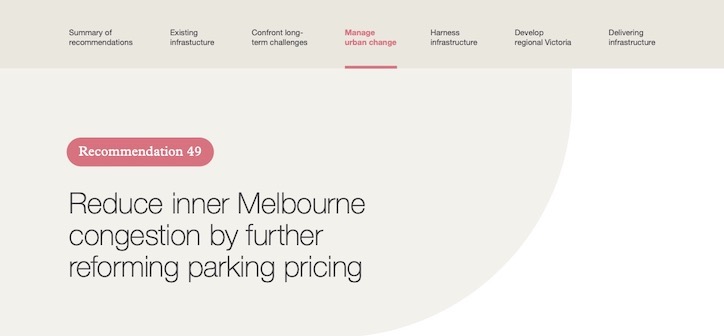
Trialling dynamic parking pricing is another way to better manage on-street parking. Dynamic parking pricing varies prices over time and between locations to manage demand. San Francisco has successfully trialled and implemented this approach.
Recommendation 49, page 137
Council should reform how it prices on-street parking, including changing from free parking to permit parking, and selling digital permits that use demand responsive pricing. For further information: https://streets-alive-yarra.org/better-for-parking/.
Recommendation 50
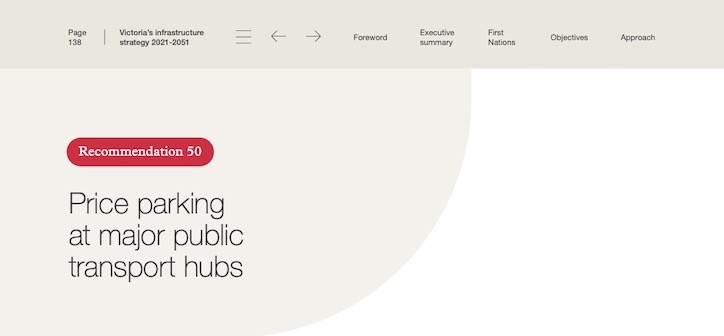
Free parking encourages some people to drive rather than walk, cycle or catch a local connecting bus to reach their transport hub and encourages overuse of valuable land for carparks…Charging for parking helps solve these problems. It encourages people to walk, cycle or catch a bus to their train station or transport hub, freeing up space for others. It also complements our recommendations to encourage walking, cycling and catching buses (see recommendations 38, 39, 57 and 58). It means parking will fill up less quickly, so people who must drive can park later in the morning
Recommendation 50, page 138
Options also exist to only allow people who use public transport to park in these facilities, or to charge a much higher rate for those who are not using public transport, as is the case in Perth and pre-booked commuter parking in NSW. Potential negative equity impacts of charging parking fees may be reduced by applying the same concession card discounts used for public transport. Some free parking spots should continue to be reserved for select public transport users, such as people with a disability.
Recommendation 50, page 138
Council should change from free parking to paid parking for all council controlled parking bays near each train station in Yarra. For further information: https://streets-alive-yarra.org/better-for-parking/.
Recommendation 52
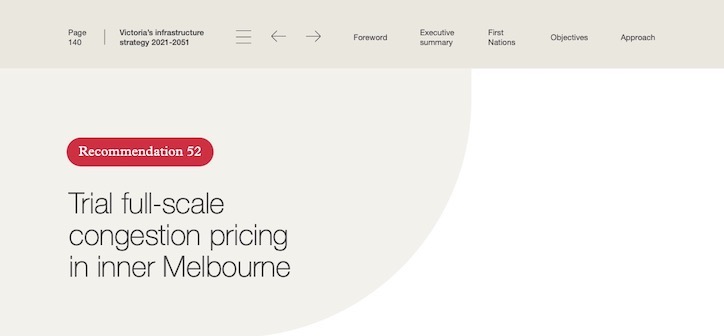
Road congestion means longer journeys with increasingly unpredictable travel times. Inner Melbourne experiences the city’s worst congestion, and easing it will yield considerable economic and social benefits. The current transport pricing system does not reflect the delays and costs that vehicles impose on other road users and society. International evidence, such as from London, Stockholm and Milan, shows introducing congestion pricing has a sustained effect on reducing congestion.
Recommendation 50, page 140
Council should work with the state government to implement congestion pricing, thus reducing congestion on our tram-based shopping streets and removing the requirement for clearways, thus enabling the streets to support level-access tram stops and protected bicycle lanes. For more information: https://streets-alive-yarra.org/shopping-streets/.
Conclusion
Streets Alive Yarra’s policy platform is supported by Infrastructure Victoria. Council should not waste any more time in implementing our suggested actions. For further information: https://streets-alive-yarra.org/actions/.
Published 28th August 2021
